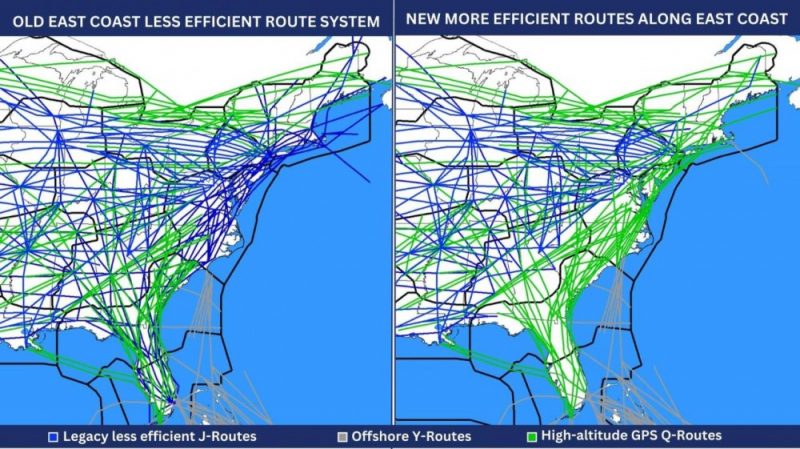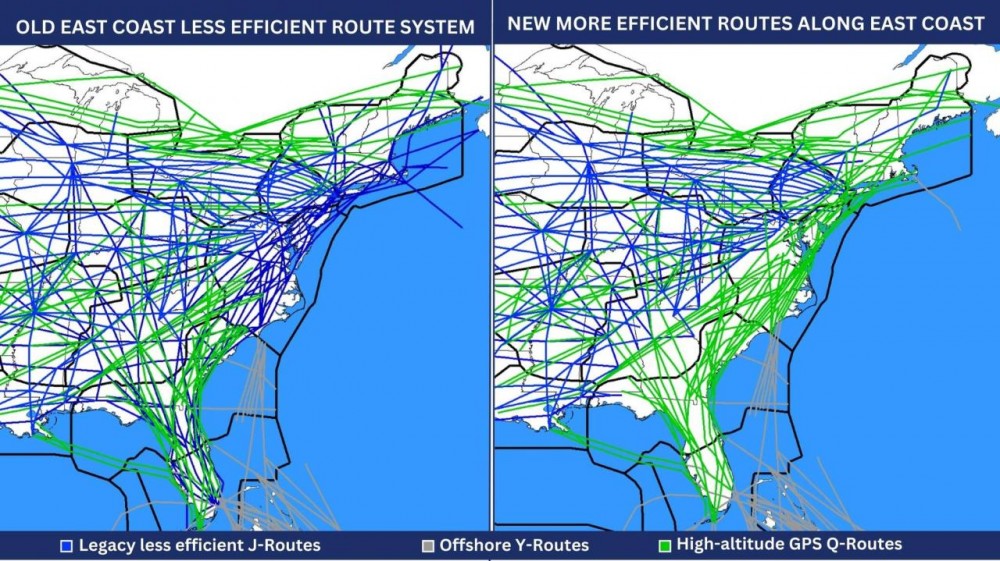The FAA just made East Coast flight routes shorter

The Federal Aviation Administration announced the launch of 169 new flight routes along the East Coast on Monday. These new flight paths are estimated to annually trim 6,000 minutes and 40,000 miles from US plane travel. The revamped trajectories, some of which extend into the Atlantic Ocean and the Gulf of Mexico, come after seven years of collaborative industry review, and primarily pertain to planes traveling at cruising altitude above 18,000 feet.
“These significant improvements to our national airspace system… will help travelers get to their destinations more efficiently,” Tim Arel, COO of the FAA’s Air Traffic Organization, said in the statement. “The new routes will reduce complexity and redistribute volume across all available airspace.”
The legacy pathways prone to zigzagging were designed when most planes relied upon ground-based radar systems. With modern aircraft utilizing GPS navigation, the FAA’s revamped maps can provide more direct travel that shaves off time and, importantly, saves on fuel; air travel has long been one of the biggest sources of carbon emissions.
Although long planned by human dispatchers, artificial intelligence is playing an increasing role in the formulation of new, efficient flight routes for pilots. In 2021, for example, Alaska Airlines began enlisting an AI system from Airspace Intelligence to help develop potential routes. According to Alaska at the time, the AI pathways saved an average 5.3 minutes in flight time, alongside nearly half a million gallons of fuel during a prior trial period.

US-based companies such as American Airlines are already chiming in on the announcement, saying the revisions are a welcome update as traveling begins to ramp up for the summer. “American has long been a proponent of unlocking additional high-altitude routes along the East Coast and we are optimistic they will have significant benefits for our customers and team members,” American Airlines COO David Seymore said via email to CNBC on Monday.
The revised routes are long overdue for a crowded, frequently problematic skyscape. According to flight tracking website FlightAware 1.7 million (around 20 percent) of all US-operated airline flights were delayed in 2022—up four percent from 2019’s pre-pandemic numbers. Around 22 percent of 2023’s US flights have already been delayed. During the 2022 holiday season, Southwest Airlines experienced a wave of massive, unprecedented delays and cancellations stemming from outdated internal employee scheduling software.










